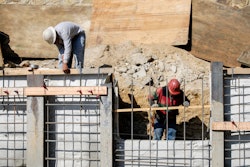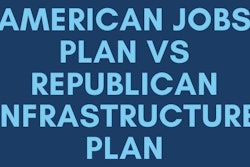
Changes at OSHA, combined with the rise in construction technology, are bound to have a ripple effect throughout the industry. Here’s a look at 11 recent and anticipated changes and their impact.
1. Biden's OSHA Appointees
In January 2021 President Biden appointed Jim Frederick to lead OSHA as the Principal Deputy Assistant Secretary of Labor for Occupational Safety and Health. Adding to the OSHA leadership team, Joseph Hughes, Jr. is appointed deputy assistant secretary for pandemic and emergency response and Ann Rosenthal is named senior advisor. In March, Boston Mayor Marty Walsh was confirmed to a Biden cabinet position as the Labor Secretary.
2. More Inspectors Ahead
With a renewed focus on enforcing the law and existing standards and guidelines, OSHA plans to double its number of inspectors.
3. Uncertainty Over Emergency Temporary Standard
While some states have established a COVID-19 workplace standard, the construction industry watches and waits if the national emergency temporary standard (ETS) moves out of its current pause status.
4. Infrastructure Investment
The proposed $2 trillion infrastructure bill has earmarked billions of dollars to fix highways, rebuild bridges and roads and upgrade road safety, ports, airports and transit systems. Additionally, the plan calls for building, preserving and retrofitting more than two million affordable homes and commercial buildings, as well as modernizing schools and childcare facilities, and upgrading veterans’ hospitals and federal buildings.
5. Commitment to Workers
Walsh, a former construction worker, states his commitment to ensuring workers feel safe on the job. He also calls for rebuilding the middle class through union membership and increasing job opportunities for women.
6. Jobsite Compliance/Enforcement
More inspectors on jobsites will drive general contractors (GC) to closely examine how they enforce compliance and avoid formal complaints.
7. Resistance to Vaccine
The pandemic is not over, despite higher percentages of the population getting vaccinated. COVID-19 variants abound and a recent survey reports that only 53% of construction workers are likely to get a vaccine.
8. Ongoing Skills Shortage
The construction industry skills shortage shows no signs of abating. According to the Associated Builders and Contractors (ABC), construction companies will need to hire at least 430,000 more workers this year, with the potential for that number to get as high as one million. Meanwhile, employee retention remains an issue, with ADP reporting a 21.4% turnover rate in the construction industry. Retention becomes an even higher priority for GCs that took PPP loans and want the Employee Retention Credit (ERC) on their taxes.
9. Supply Chain Challenges
The supply chain continues to be challenged. The price of lumber has been steadily increasing since January 2020. This is followed by rising costs of drywall and steel. Adding to this is the long-term effects of shipping delays going back to late 2020, exacerbated by the more recent incident with the container ship Ever Given getting stuck in the Suez Canal. Expect to see continued delays in the delivery of construction materials and heavy equipment. In turn, prices will soar.
10. Technology Revolution
Many of these challenges are already being addressed through technology. It’s no secret that the construction industry is in the middle of a technology revolution. According to McKinsey, venture capitalists are investing more in construction tech than any other sector. In large part, this is due to the democratization of technology, skills shortage and the ongoing infrastructure issues. It’s the pandemic that accelerated technology’s adoption among GCs.
For example, digital check-in apps support social distancing and contact tracing, while eliminating paper sign in forms and face-to-face health screenings, making it easy to abide by an ETS.
Once GCs realized these smartphone apps could save hours at the start of each day, they saw the value in them beyond the pandemic. This explains why these apps are evolving. Now they can show workers and subcontractors check-in screens that assign them to tasks, locations and supervisors. In some instances, a worker is required to watch a training video before they start. The time and cost savings enable GCs to revisit their margins, especially as the cost of supplies increase.
Also read: Will Construction’s High-Tech Embrace Continue Post-pandemic?
Those digital check-in records are also used to reconcile hours worked with invoices, verify who is on site and what they’re doing and prove the GC is in compliance with OSHA guidelines. It’s also a way to reinforce safety guidelines and manage capacity as employees carefully come back to the office.
To support employee retention, the apps come in multiple languages. Also, the data and analytics on attendance can help spot HR trends. If you connect check-in data with a project management platform, it provides greater insight into productivity, performance, and profitability.
11. Opportunities Ahead
Today there are tremendous opportunities in construction, but not at the risk of hefty fines, razor thin margins and insufficiently staffed projects. Investing in modern construction technology, from simple-to-use check in apps to more comprehensive platforms, can give GCs an advantage.
David Brian Ward is the CEO and founder of Safe Site Check In.


















